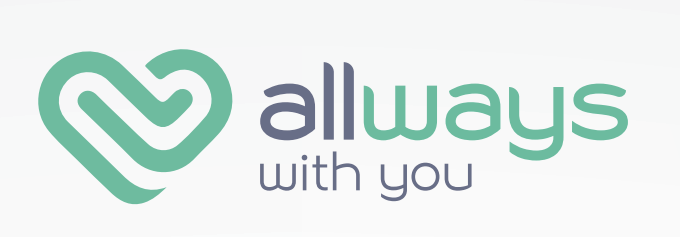Aging in Place
A User Research Study
Collaborative UXR Remote Internship with a health tech startup
Background
Startup Allwayswithyou (AWY) wants to help seniors age at home. Their app monitors health metrics, giving advice when needed. Investors think the app is appealing to family members but doubt seniors will use it. My team researched elder needs, wants, and pains to address this concern.
Role
UX Research Intern & Project Manager
Timeline
5 weeks
Project Onboarding and Scoping (1)
Survey Design, Participant Recruitment (1)
Secondary and Primary Research (2)
Synthesis and Research Readout (1)
Deliverables
Affinity map
User personas
Empathy maps
Jobs to be done
How might we statements
User research report
Presentation to stakeholders
Skills
Project scoping
Screener survey writing & distribution
Discussion guide creation
Interviewing
Synthesis
Facilitation
Tools
Figma
FigJam
Google Workspace
Slack
Zoom
Research Statement
What are seniors' needs, wants, and pain points with aging in place?
Goals
Understand how their needs and wants are being met. Identify pain points.
Uncover senior thoughts on using tech to address needs and wants.
Recommend insight-driven next steps.
Methods
Secondary Research
The Village Movement and AmeriCorps Seniors are competitors. Both aim to meet seniors' emotional needs.
Villages are independent neighborhood-run nonprofits. They focus on elders’ transportation, socialization, and fulfillment needs. Some offer discounted services to address affordability.
AmeriCorps Seniors gives meaning through volunteering. Some low-income seniors are eligible for stipends. An independent study showed Seniorcorps volunteering improves health and longevity.
Quantitative Participant Recruitment
The screener survey was distributed using Reddit, Nextdoor, Facebook, SurveyCircle, and community outreach. There was no budget, so no incentives were offered.
Over 7 days, we received 121 responses:
44 seniors
16 willing to talk
13 invited to video chat
7 interviewed
The Google Forms survey
Qualitative In-Depth User Interviews
We conducted six 30-40 minutes Zoom interviews and one 11 minute in-person interview. The moderator’s guide divided interviews into themes:
Getting to know them
Routine
Social and emotional needs
Communication with family
Health monitoring
Challenges
Tech
Sample Questions
Walk me through your daily routine;
Are there any foods you eat regularly? Tell me about them.
Tell me about the last time you exercised.
Do you have any concerns about the next 10-20 years?
Diverse seniors were interviewed
Synthesis
I shared findings and insights from secondary research. We debriefed interviews & affinity mapped to extract themes.
Affinity mapping in progress
Outputs
Deliverable types were chosen to help stakeholders imagine elders as specific people. Designs used branding colors and typography.
Affinity Map
Findings were grouped into six categories.
Living conditions & tech usage/attitudes
Health & social/emotional needs
Concerns/pain points & hobbies
Insights shaped personas.
User Personas
Personas represented the two most common stances towards new tech.
Tanya is comfortable with tech but feels neutral about trying new tech.
Dave uses tech daily but is suspicious of new tech solutions.
Empathy Maps
Empathy maps built on their personalities.
Tanya likes helping people and staying busy. She’s worried about mental acuity.
Dave likes routine. He volunteers and worries about his future.
We built deliverables together. I led Jobs To Be Done and How Might We Statements brainstorms. We used these to determine recommendations, presenting them to stakeholders over Zoom.
Assumptions and Biases
Emma, a forgetful user persona, was included in onboarding. Some of her traits were relatable but her pains didn't align with our research. We assumed Emma had declining capacity.
Diverse participants were selected. One interviewee lives in India. 3/7 have lived abroad. But since 6/7 live in America, we assumed our research represented U.S.-based seniors.
Insights were influenced by our experiences taking care of elderly family members.
Next Steps
Interviewees had concerns about privacy, radiation, and toxic content. This made them cautious with unfamiliar tech. We recommended non-intrusive tech that blends into seniors' routines, like:
A smart fridge that asks what they ate today;
A smart bathroom mirror that asks about sleep quality;
A smart home device that asks how they exercised the day before;
An app integrated with WhatsApp that asks quick health questions before video chats.
Before deciding on a solution, we recommended:
Researching family caregivers;
Conducting market research;
User journey mapping;
Designing and testing low & high fidelity prototypes of an MVP;
Iterating based on findings;
Releasing in the target market (instead of one global release); and
Testing usability in new markets to account for different cultural, medical, and legal contexts.
Deliverables presentation to stakeholders
Reflections
This internship was highly collaborative despite being spread across four time zones. I cowrote planning documents with one teammate. Each researcher interviewed multiple participants. We synthesized findings over Zoom, creating deliverables together. We polished the UI of deliverables asynchronously, along with writing sections of the research report. We practiced presenting together before the deliverables presentation.
We delivered news that seniors are unlikely to use the AWY app. They would be more motivated by apps that enhance community or meet practical needs. Elders could be interested in a health app but moving past hesitancy would be difficult. Stakeholders took our feedback constructively.
If time, budget, and stakeholder interest allowed, I would visit Villages & SeniorCorps locations to:
Conduct interviews;
Collect ethnographic data from events, and
Ask representatives what elder needs/wants/pain points they've observed.




